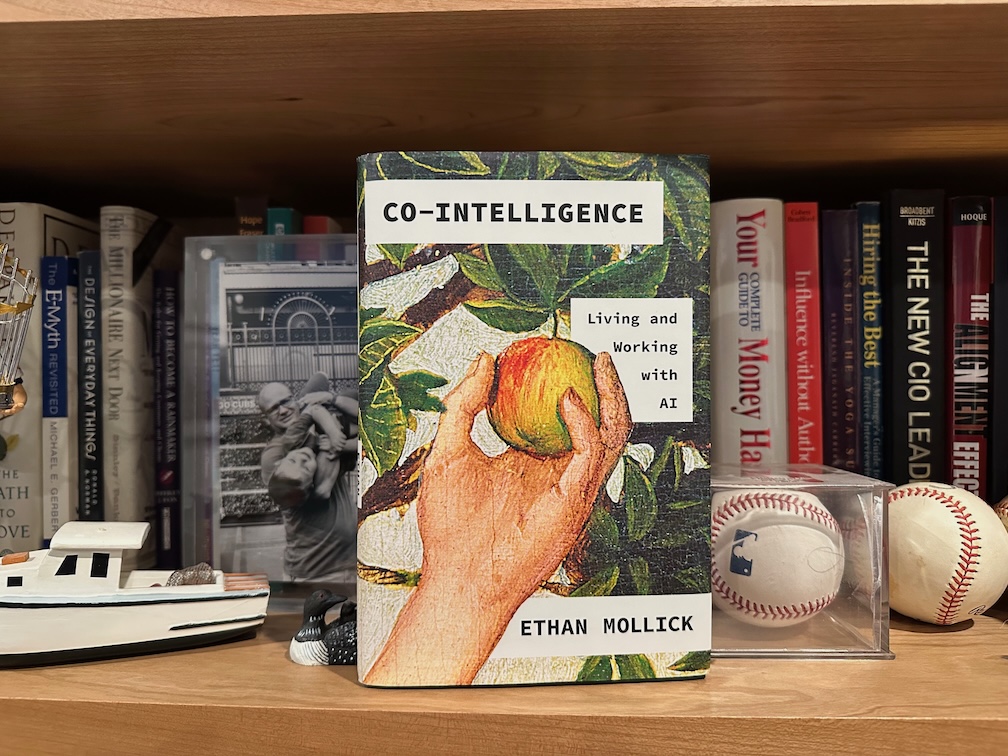
Co-Intelligence: Exploring Ethan Mollick’s Vision of Human-AI Collaboration
As AI tools like ChatGPT and Claude evolve at lightning speed, the concept of Co-Intelligence—where humans and AI collaborate seamlessly—is becoming increasingly important. Ethan Mollick, an Associate Professor at the Wharton School of Pennsylvania and a thought leader in Artificial Intelligence, presents a compelling vision for this future: one where an AI-first mindset can unlock new levels of creativity and productivity. But is this approach worth the hype?
Mollick makes a strong case that it is. He argues for adopting an AI-first mindset by treating AI as a “thinking companion” to improve decision-making. By using AI daily to learn its strengths and weaknesses, you will grow by understanding when and how to harness its value. Mollick’s guiding principles help address some common concerns with AI, like its tendency to hallucinate—or predict incorrect information.
While these principles don’t resolve every concern, such as human and societal risks, I believe they provide a strong foundation for learning and growth through AI. For the purposes of this article, when I refer to AI, I’m specifically talking about Large Language Models (LLMs)-deep learning models that are pre-trained on vast amounts of data-and tools like ChatGPT and Claude, which assist in tasks ranging from idea generation to real-time coaching.
Principles of Working with AI
Mollick states, “The fact is we live in a world with AIs, and that means we need to understand how to work with them.” To guide your transition to an AI-first mindset, he provides four key principles:
- Principle 1: Always invite AI to the table.
- Team up with AI to understand its nuances, limitations, and abilities. There is no single instruction manual for AI, so actively learning through usage is key.
- Principle 2: Be the human in the loop.
- Retain control and accountability over the predictions AI provides. You must validate results to ensure they are accurate and align with human values, ethical standards, and social norms.
- Principle 3: Treat AI like a person (but tell it what kind of person it is).
- Give your AI a persona through prompt engineering to receive more useful and targeted output.
- Principle 4: Assume this is the worst AI you will ever use.
- View AI’s current limitations as temporary and remain open to new developments.
Benefits of Using AI
Mollick encourages adopting an AI-first mindset, not because AI is flawless, but because working with it can foster personal and professional growth. Examples he shares include:
- Negotiation Training
- Mollick used AI to train on negotiation skills. Although imperfect, the AI accomplished 80% of what his team took months to achieve. I personally used this prompt in ChatGPT, and within minutes, I was immersed in a negotiation scenario that pushed me to think critically. The real-time coaching was invaluable.
- Efficiency Gains
- A study by MIT researchers Shakked Noy and Whitney Zhang found that ChatGPT users reduced their task completion time by 37%, and the quality of their work increased according to human evaluators.
In my own use, Claude mistakenly stated Mollick had written a book he hadn’t authored. This highlights the importance of Mollick’s second principle: being the human in the loop and taking accountability for AI’s outputs.
Addressing Concerns
While AI offers many benefits, there are concerns about its impact on human society and individual autonomy. Critics point to security risks, a loss of the “human touch,” and the potential for overreliance on AI. These are valid concerns, but Mollick’s principles provide a framework for navigating them while still reaping AI’s benefits. By using AI as a tool rather than a replacement for human decision-making, we can address these risks head-on.
Conclusion
Mollick’s four principles provide a roadmap for collaborating with AI in a way that addresses key concerns while maximizing its benefits. Whether you’re an AI enthusiast or a skeptic, adopting an AI-first mindset can transform the way you work. Start small—try using AI for tasks like brainstorming or drafting emails—and discover firsthand how it can boost your productivity and creativity. Expand your knowledge of prompt engineering by experimenting with existing prompt libraries and share your learnings with others!